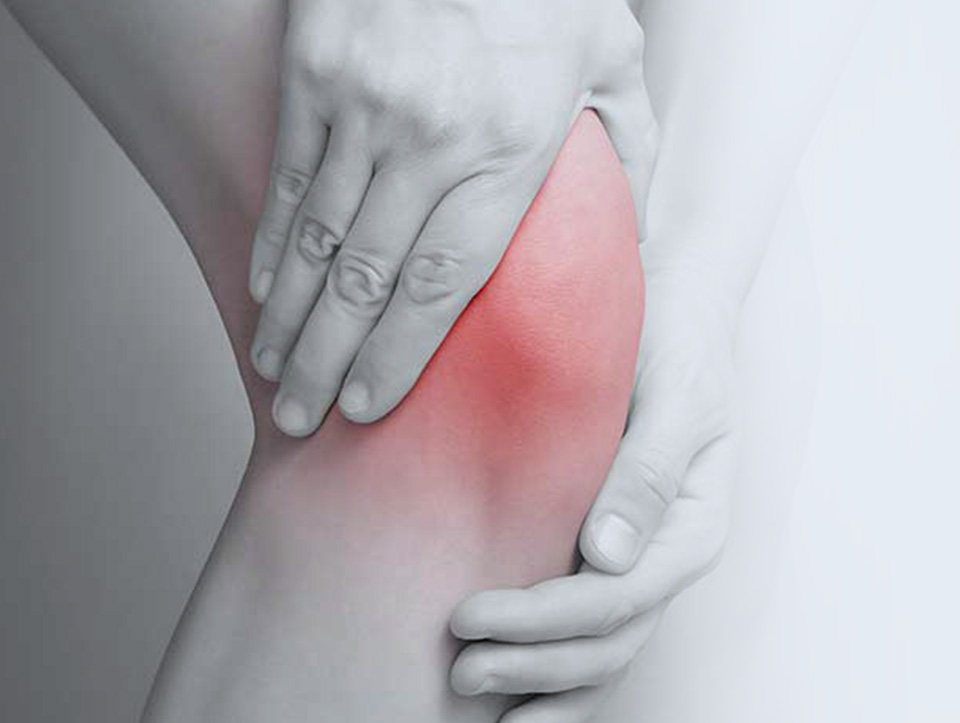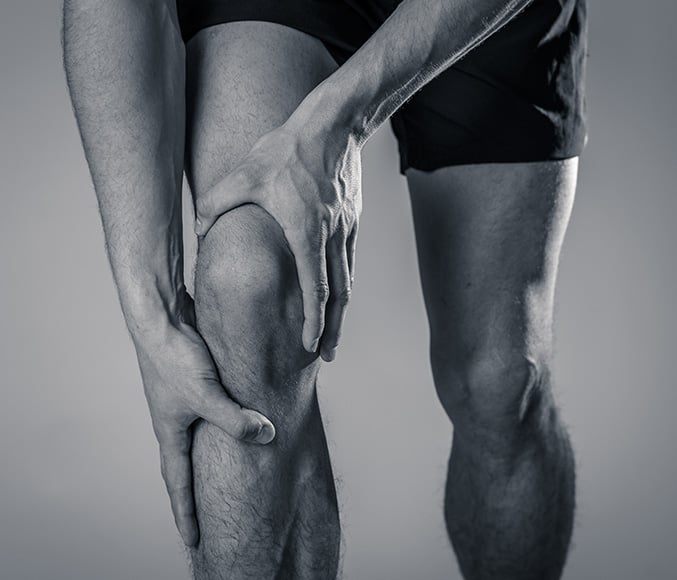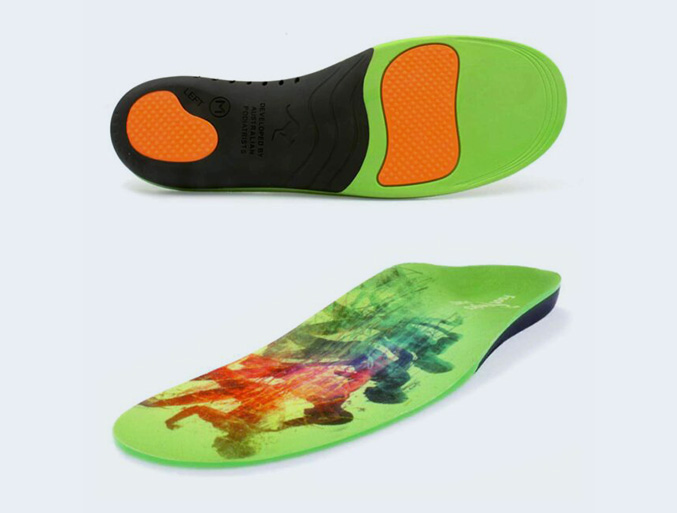Knee pain is a common occurrence and there are different types of it as well. One of them is Patello-femoral Syndrome or Chondromalacia Patellae (also known as Runner's Knee). Sinding-Larsen-Johansson Disorder, Patella Tendinitis and Bursitis are the less common ones. Osgood-Schlatter Disease is another form of knee pain that occurs only in children and adolescents.
For well over a decade Footlogics has been a sought-after name for the development and supply of orthotics for knee pain treatment. We have a wide range of orthotics and insoles to suit customers in need of extra support and comfort when playing sport, exercising, or just in their day-to-day life. Footlogics orthotics will also help to promote better health and wellbeing overall, and can even reduce the risk of knee issues in the future.
Patello-femoral Syndrome is a chronic knee pain and is among the most common ones known to us. It is characterized by a sharp ache between the knee cap (patella) and the thigh bone or femur lying underneath. Patients suffering from it experience pain and tenderness on the front or the face of their knee, giving it the name of Anterior Knee Pain. Patello-femoral pain gets worse when you sit for long hours in a single position or stand up from a chair or get out of your car, or when you climb stairs. Many people often complain of experiencing a grinding or crunching feeling in their knee joint.
Knee pain can occur due to many reasons and the most common ones are:
The cartilage behind the knee cap (patella) softens and starts to wear out over time which results in small areas of the soft tissue breaking down and tearing away. Under normal conditions the knee cap would glide over the knee smoothly. In case of this problem the knee cap instead of gliding smoothly, rubs against the thigh bone or the femur. This is due to the damage caused and roughening that has occurred over the years. This constant grinding causes pain in your knees while walking or moving from one place to the other or when you get up from a chair, etc. It also leads to erosion of the knee cartilage (partial or complete), which causes pain and swelling.
There are two pads of cartilaginous tissue in your knee joints that disperse friction between the shin bone or tibia and the thigh bone or femur. These are called meniscus (plural: menisci) and are found on the inside and outside of your knees. In some cases the meniscus may tear away. Its broken or torn piece may get stuck in the knee joint. This in turn leads to pain, swelling and of course decreased movement.
Muscle imbalance is another major reason for this kind of knee pain. Your inner quadriceps are weaker than the outside ones and thus the latter tend to pull your knee caps toward the side. This muscle imbalance leads to mal-tracking of the patella which would otherwise be running properly in its groove. This condition leads to cartilage erosion and pain and is also called patella tracking disorder. The best way to address this problem is by performing certain exercises that strengthen your weak muscles.
Here at Footlogics we supply orthotics for knee pain, which help to treat and correct the issues in the foot that may have a direct connection to swelling or discomfort in and around the knee. We work to provide our customers with premium orthotics that will help them to participate in the activities they enjoy without being held back by nagging pain and discomfort.
We believe that the most common causes of Patello-femoral pain are age, injury, and trauma, whereas nobody pays attention to faulty foot biomechanics. This surprisingly plays an important role in causing this pain as most health practitioners are of the opinion that our manner of walking, and the position of our feet and ankles affect our legs, knees, and hips and even lower back up to a large extent.
Studies suggest that close to 70% of the population has a condition called over-pronation. This means that their ankles tend to roll inwards and that the arch is low when the foot lands on the ground while we are walking. Experts say that this over-pronation affects our feet and also causes our lower legs to rotate.
Our knees are not meant to rotate but to form a link between our upper and lower leg. They function as a hinge joint that is designed to flex and extend forward our lower leg. However, in many cases when our foot rolls inwards, it is called over-pronation and it forces our lower leg to rotate, which places abnormal stress on our knee joints. This results in deterioration of the knee function.
This inevitably leads to abnormal wear and tear of the knee cartilage resulting in long-term damage and sharp chronic pain. Most physiotherapists in the US have now started to include feet assessment in knee diagnosis as more and more cases of people suffering from over-pronation are coming up.
The staff here at Footlogics have a comprehensive understanding of the biomechanics of the foot, and the role it plays in causing knee pain. We use this information to develop and refine orthotics for knee pain that are proven and effective.
The type of treatment you receive will depend on the type of knee pain you have. Most athletes and runners often complain of pain due to sports injuries. These can usually be cured using the RICE method: Rest, Ice, Compression and Elevation. A sports physiotherapist would suggest extra care while playing sports such as rugby and soccer, players of which can easily rupture their anterior cruciate ligament.
However, common knee pain resulting due to age and strenuous labor, etc. requires a different approach. A physiotherapist understands chronic knee pain best. In some cases he would also suggest surgery to achieve permanent pain relief.
Strengthening of the VMO muscles or the Vastus Medialis Oblique is very important as it functions like a dynamic stabilizer for your knee cap. These muscles are a part of your quadriceps and are placed just above and towards the inside of your knee cap. The fibers of VMO in healthy individuals are active throughout the movement, contracting with ease during the entire range of motion. In people with Patello-Femoral pain on the other hand these muscle fibers contract inconsistently which leads to them fatiguing rapidly.
Stronger VMO muscles ensure that your patella stays in the patella groove. It controls the tracking of the patella when you bend and/or straighten your knee. Scroll down to see more details on strengthening exercises. Strengthening exercises are highly recommended to patients by many physiotherapists as part of their knee pain therapy.

Knee braces help to stabilize your knee joint and are highly recommended by physiotherapists. Among so many different types of knee braces available in the market, the most common are the Patella-Femoral brace. These are designed to improve patellar tracking and also help relieve anterior knee pain. Patellofemoral braces prevent the lateral displacement of the patella. This helps in maintaining patellar alignment and tracking. They are relatively affordable and can easily be used in conjunction with any other pain treatments or therapies.

Just like knee braces, foot orthotics is very light on your budget and proves very helpful in knee pain treatment. They are ideally used in conjunction with other forms of knee pain treatment and therapies especially strengthening exercises. Orthotics work to prevent internal leg rotation by re-aligning our feet and ankles which is a primary cause of patella mal-tracking.
Many studies claim the success rate of orthotic insoles to be high in various patients suffering from patello-femoral knee pain. Experts at the University of Queensland conducted a study recently that showed a comparative analysis of results in 2 patient groups. The first group was given a combination treatment of physiotherapy and orthotics and the other one received only physiotherapy. The former showed significant improvement with regards to knee pain as compared to the latter.
Orthotics are worn by leading athletes as it ensures proper alignment of their feet, legs and knees. Footlogics orthotics correct overpronation to restore proper knee function. It works by eliminating one of the primary causes of patello-femoral pain. If you too suffer from fallen arches and/or too much rolling inward of your ankles, orthotics can provide you with significant knee pain relief.

Knee pain is often caused by issues stemming from our feet. Whether they lack support, are overpronated, or are suffering strain in the metatarsal area, these problems travel up the leg and affect the knee, causing frequent pain and discomfort as well as the potential of long-term damage.
At Footlogics we offer a number of insoles for knee pain, helping the user to correct the issues in their feet that are impacting their knees. Quite often simply treating knee pain in an individual will only offer short-term or temporary relief from pain and discomfort, with correct and targeted foot support needed to provide lasting relief and effective treatment.
